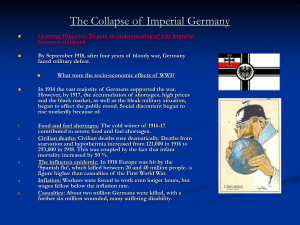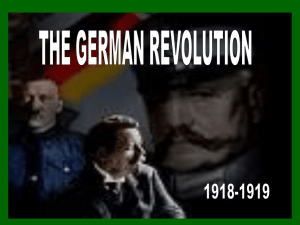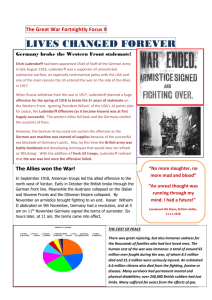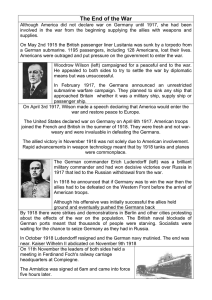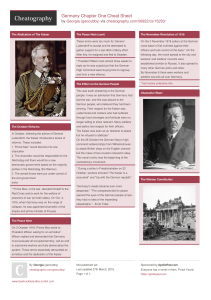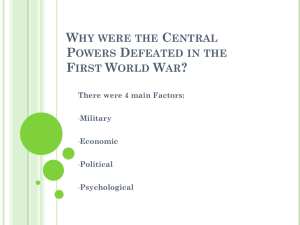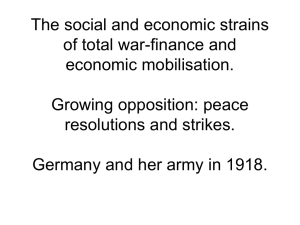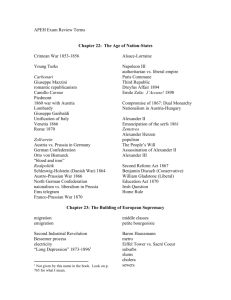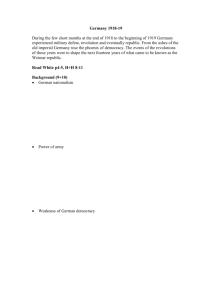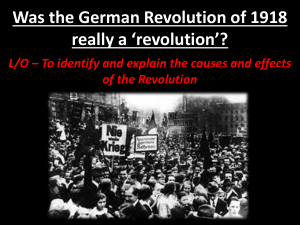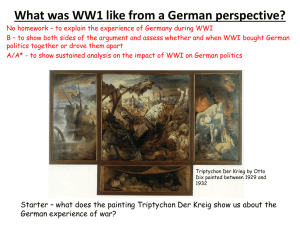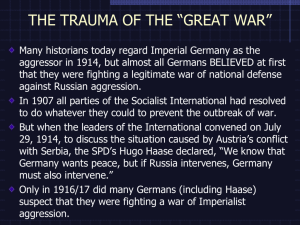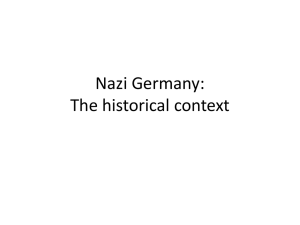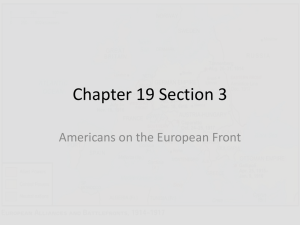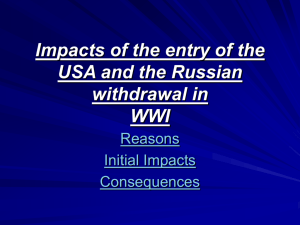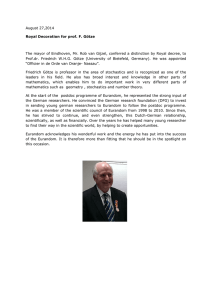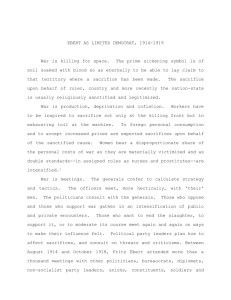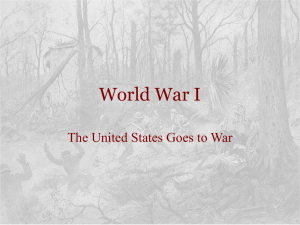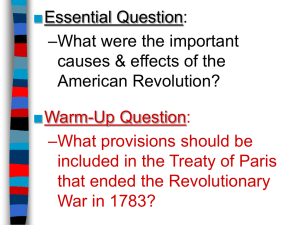revolution - CCB History
advertisement
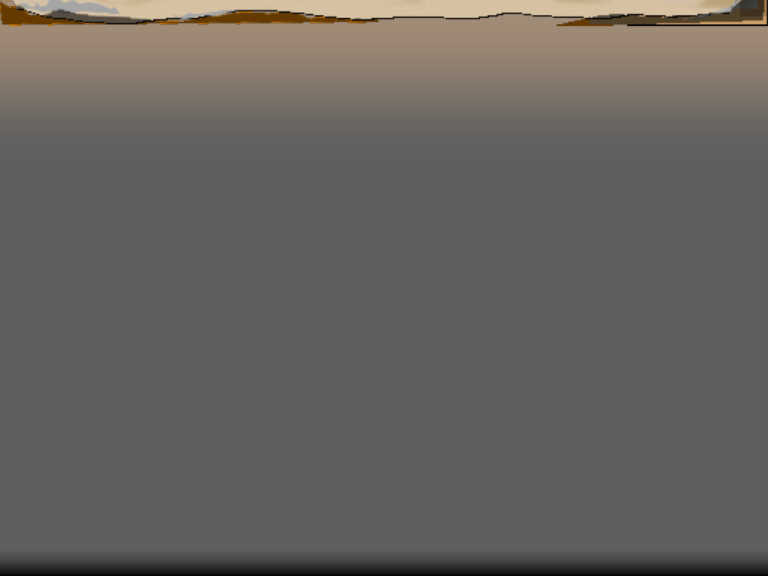
GERMANY 1918-45 THE GERMAN REVOLUTION Background German superiority on land & sea in 1914? From 1914 Germans were assured by the army’s high Command of certain victory. WAR: THE LOCOMOTIVE OF HISTORY The Schlieffen Plan failed & two fronts caused stalemate. Germany’s last chance for victory was after Russian Brest-Litovsk Treaty in March 1918. It gave Germany huge eastern territories. It freed troops to fight on the western front. March –July: a series of spring offensives took ground. August: Allies counter-attacked & gained ground: fresh American reinforcements began to flood into Europe. REVOLUTION Sept: Field Marshall Hindenburg & General Ludendorff realised that defeat was imminent. Aim: to protect Army’s reputation & blame civilian politicians. Ludendorff advised Kaiser to sue for peace & form a new government of the main party leaders. Paul von Hindenburg THE STAB IN THE BACK 1st Oct: Prince Max of Baden, political moderate & head of German Red Cross became Chancellor. His government would soon be accused of stabbing Germany in the back. The Stab in the Back! TURMOIL The new government lasted only weeks before popular revolution occurred: Sailors mutinied in Kiel, tired and afraid of rumours of a suicide attack. They were followed by soldiers and hungry workers. Soviets (councils) were set up in many northern towns. Friedrich Ebert In Oct 1918 President Wilson (USA) clarified that the war would not end with the Kaiser in office. He came to be seen as an obstacle to peace and internal pressure forced him to abdicate and flee to Holland on 10th November 1918. An armistice was signed on the next day (11th Nov.) by Friedrich Ebert, leader of the largest party (SDP). It did not bring peace to Germany.
